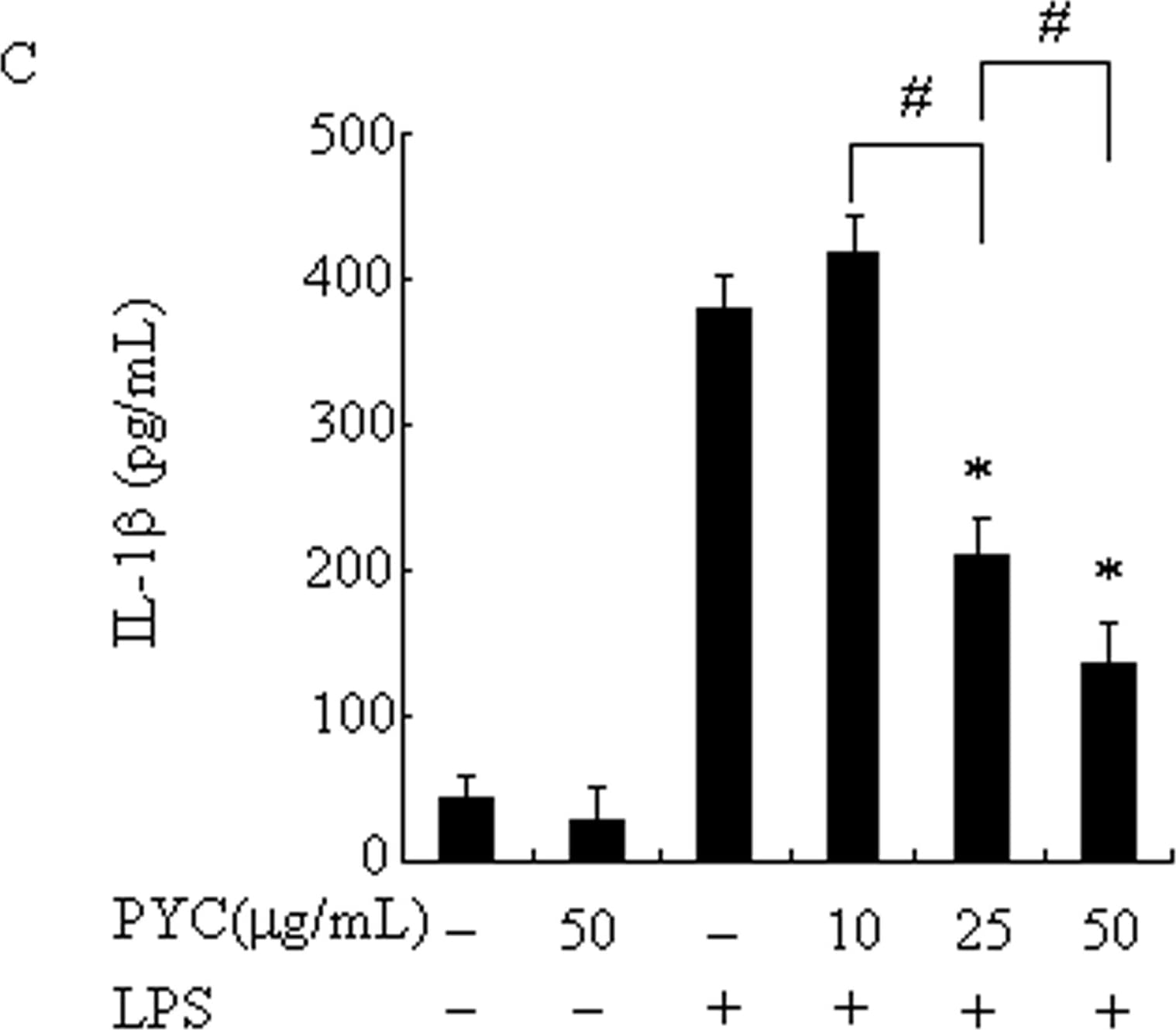



 下载产品说明书
下载产品说明书 下载SDS
下载SDS 用小程序,查商品更便捷
用小程序,查商品更便捷



 收藏
收藏
 对比
对比 咨询
咨询Precision
Cell Culture Supernates, Tissue Lysates, Serum, EDTA Plasma, Heparin Plasma
| Intra-Assay Precision | Inter-Assay Precision | |||||
|---|---|---|---|---|---|---|
| Sample | 1 | 2 | 3 | 1 | 2 | 3 |
| n | 20 | 20 | 20 | 20 | 20 | 20 |
| Mean (pg/mL) | 33.5 | 92.9 | 386 | 34.6 | 93.5 | 423 |
| Standard Deviation | 2.5 | 4.3 | 11.7 | 2.9 | 6.2 | 23.9 |
| CV% | 7.5 | 4.6 | 3 | 8.4 | 6.6 | 5.7 |
Recovery
The recovery of mouse IL-1 beta spiked to three levels throughout the range of the assay in various matrices was evaluated.
| Sample Type | Average % Recovery | Range % |
|---|---|---|
| Cell Culture Supernates (n=4) | 106 | 95-119 |
| EDTA Plasma (n=4) | 108 | 101-117 |
| Heparin Plasma (n=4) | 97 | 87-114 |
| Serum (n=4) | 105 | 98-113 |
| Tissue Lysates (n=4) | 115 | 110-120 |
Linearity
Scientific Data
 View Larger
View LargerHuman E‑Cadherin Antibody PYC suppressed LPS-induced proinflammatory cytokine production in BV2 microglia.Cells were incubated with the indicated concentrations of PYC or vehicle for 1h before LPS treatment (500ng/mL). After 24 h incubation, the culture supernatants were collected, and the amount of TNF-alpha, IL-6, IL-1 beta and IL-10 were measured by ELISA (A-D). Data are represented as mean ± SD from at least 3 independent experiments. *P< 0.05 compared with LPS alone. #P< 0.05. Image collected and cropped by CiteAb from the following open publication (https://dx.plos.org/10.1371/journal.pone.0137837), licensed under a CC-BY license. Not internally tested by R&D Systems.
Mouse IL-1 beta/IL-1F2 Quantikine ELISA Kit Summary
Background: IL-1 beta/IL-1F2
The Interleukin 1 (IL-1) family of proteins consists of IL-1 alpha, IL-1 beta, and the IL-1 receptor antagonist (IL-1ra). IL-1 alpha and IL-1 beta bind to the same cell surface receptors and share biological functions (1). IL-1 is not produced by unstimulated cells of healthy individuals with the exception of skin keratinocytes, some epithelial cells, and certain cells of the central nervous system. However, in response to inflammatory agents, infections, or microbial endotoxins, a dramatic increase in the production of IL-1 by macrophages and various other cell types is seen. IL-1 beta plays a central role in immune and inflammatory responses, bone remodeling, fever, carbohydrate metabolism, and GH/IGF-I physiology. Inappropriate or prolonged production of IL-1 has been implicated in a variety of pathological conditions including sepsis, rheumatoid arthritis, inflammatory bowel disease, acute and chronic myelogenous leukemia, insulindependent diabetes mellitus, atherosclerosis, neuronal injury, and aging-related diseases (2-5).










 危险品化学品经营许可证(不带存储) 许可证编号:沪(杨)应急管危经许[2022]202944(QY)
危险品化学品经营许可证(不带存储) 许可证编号:沪(杨)应急管危经许[2022]202944(QY)  营业执照(三证合一)
营业执照(三证合一)